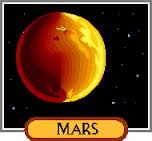 One of the most challenging aspects of a human mission to Mars is landing safely on the Martian surface. Mars has such low atmospheric density that decelerating large masses (tens of metric tons) requires methods that have not yet been demonstrated, and are not yet planned in future Mars missions. To identify the most promising options for Mars entry, descent, and landing, and to plan development of the needed technologies, NASA’s Human Architecture Team (HAT) has refined candidate methods for emplacing needed elements of the human Mars exploration architecture (such as ascent vehicles and habitats) on the Mars surface. This paper explains the detailed, optimized simulations that have been developed to define the mass needed at Mars arrival to accomplish the entry, descent, and landing functions. Based on previous work, technology options for hypersonic deceleration include rigid, mid-L/D (lift-to-drag ratio) aeroshells, and inflatable aerodynamic decelerators (IADs). The hypersonic IADs, or HIADs, are about 20% less massive than the rigid vehicles, but both have their technology development challenges. For the supersonic regime, supersonic retropropulsion (SRP) is an attractive option, since a propulsive stage must be carried for terminal descent and can be ignited at higher speeds. The use of SRP eliminates the need for an additional deceleration system, but SRP is at a low Technology Readiness Level (TRL) in that the interacting plumes are not well-characterized, and their effect on vehicle stability has not been studied, to date. These architecture-level assessments have been used to define the key performance parameters and a technology development strategy for achieving the challenging mission of landing large payloads on Mars.
One of the most challenging aspects of a human mission to Mars is landing safely on the Martian surface. Mars has such low atmospheric density that decelerating large masses (tens of metric tons) requires methods that have not yet been demonstrated, and are not yet planned in future Mars missions. To identify the most promising options for Mars entry, descent, and landing, and to plan development of the needed technologies, NASA’s Human Architecture Team (HAT) has refined candidate methods for emplacing needed elements of the human Mars exploration architecture (such as ascent vehicles and habitats) on the Mars surface. This paper explains the detailed, optimized simulations that have been developed to define the mass needed at Mars arrival to accomplish the entry, descent, and landing functions. Based on previous work, technology options for hypersonic deceleration include rigid, mid-L/D (lift-to-drag ratio) aeroshells, and inflatable aerodynamic decelerators (IADs). The hypersonic IADs, or HIADs, are about 20% less massive than the rigid vehicles, but both have their technology development challenges. For the supersonic regime, supersonic retropropulsion (SRP) is an attractive option, since a propulsive stage must be carried for terminal descent and can be ignited at higher speeds. The use of SRP eliminates the need for an additional deceleration system, but SRP is at a low Technology Readiness Level (TRL) in that the interacting plumes are not well-characterized, and their effect on vehicle stability has not been studied, to date. These architecture-level assessments have been used to define the key performance parameters and a technology development strategy for achieving the challenging mission of landing large payloads on Mars.
| Personal Author | A. M. DwyerCianciolo M. M. Munk | |


